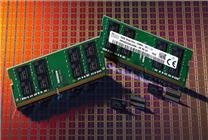Intel Panther Lake: A Breakthrough in Hybrid Architecture and Energy Efficiency
Summary:
- Intel’s Panther Lake and Clearwater Forest processors utilize an innovative hybrid architecture for improved functionality and efficiency.
- The Intel 18A process represents a significant leap in semiconductor technology with advanced transistors and power supply methods.
- Key innovations like RibbonFET and PowerVia drastically enhance performance and reduce power consumption.
Introduction
As we approach the National Day holiday, Intel unveiled impressive advancements during its Tech Tour event in Phoenix, Arizona. This event, spanning multiple locations, showcased revolutionary technology in semiconductor manufacturing, centered around the next-generation processors: Core Ultra Panther Lake and Xeon 6+ Clearwater Forest.
While specific product models and performance metrics will be disclosed with official releases, the architectural designs and technological innovations present exciting prospects for the future of computing.
The Future of Processing: Intel’s Innovations
Mass Production of the Intel 18A Process
Both Panther Lake and Clearwater Forest will be the inaugural mass-produced processors built using the Intel 18A process—a cutting-edge manufacturing technology. This leap signifies not only a technological innovation but also the onset of what Intel terms the "Am Era" of semiconductors, focusing on improved density, performance, and energy efficiency.
Key Features of the Intel 18A Process
The Intel 18A process introduces two pioneering technologies: RibbonFET and PowerVia. These innovations fundamentally transform traditional transistor and wafer designs, shaping the next generation of semiconductor technology.
-
RibbonFET Technology:
- RibbonFET represents a GAA (Gate-All-Around) structure that optimally enhances transistor performance.
- It features a four-layered Nano Ribbon design that completely encloses the channel. This design results in a 20% increase in driving current and a 15% boost in switching speed compared to conventional FinFET structures.
- PowerVia Technology:
- This innovative back power supply approach relocates the power supply circuit from the front to the back of the wafer, minimizing congestion and improving efficiency.
- Benefits include enhanced power supply efficiency with a 30% reduction in voltage drop, increased operational frequencies by up to 6%, and improved signal integrity by mitigating interference.
Efficiency and Cost-Effectiveness
The integration of RibbonFET and PowerVia not only enhances performance metrics but also streamlines production. Intel’s approach significantly reduces manufacturing complexities:
- Reduction in Masks and Process Steps: Compared to previous generations, the Intel 18A process boasts a 44% decrease in mask requirements and a 42% reduction in process steps, easing production costs while enhancing output quality.
- Overall Energy Efficiency: The combination of these technologies leads to an overall energy efficiency improvement of up to 15%, achieving 25% lower power consumption at equivalent performance levels and a 30% increase in chip density.
Anticipated Timeline and Production Capabilities
Intel’s 18A process is on an accelerated path toward mass production, with a clear timetable set. Currently undergoing trial runs, Intel aims to introduce this cutting-edge process commercially by the fourth quarter of this year, aligning with the launch timeline for Panther Lake.
Intel reports that the yield rate for the 18A process is matching or even surpassing their previous levels over fifteen years, indicating strong production capabilities.
Advanced Packaging Technologies
In addition to pioneering semiconductor processes, Intel is also making strides in advanced packaging technologies. Panther Lake will leverage the Foveros-S 2.5D packaging technology in conjunction with EMIB (Embedded Multi-die Interconnect Bridge), facilitating efficient interconnection and scalability across different components. This results in optimized performance while managing costs effectively.
Conclusion
As Intel continues to innovate, the Pong of hybrid architecture embodied in the Panther Lake and Clearwater Forest processors signals a transformative leap in the semiconductor landscape. With advanced processes that promise reduced power consumption and enhanced operational efficiency, the future of computing appears promising. Keep an eye on Intel as they lead the charge in delivering efficient and powerful processing solutions that meet the ever-evolving demands of modern technology.
By embracing these groundbreaking technologies, Intel is setting the stage for a new era in computing, where performance and energy efficiency go hand in hand.








